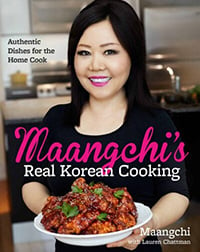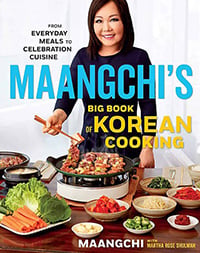This is a library of Korean recipes from my life experience as a Korean home cook: eating, living, cooking, experimenting, fermenting, foraging, learning from my family, friends, people around me, Korean street vendors, restaurants, market stalls, Buddhist monks, and whoever I met who made delicious food that I wanted to learn. : )
These recipes are evolving so I'm always adding new ones and improving old ones. If there's a dish that you want that's not here, please request it. If you're new to Korean cooking, you can check out my Beginner's Guide to Korean Cooking. and if you make something delicious with one of my recipes, you can upload a photo of it to my photo page, or tag it #maangchi on social media.
If you need Korean ingredients, you can find them in Korean grocery stores in your area, or online.
I hope you find something here that you can enjoy with your friends and family! Happy cooking!
Most popular recipes
The all-time most-loved recipes on my website so far!
Recent recipes
The newest recipes that I've published on my website!
Recently updated recipes
These recipes had some improvements made to them recently.
Recipes by category
All the recipes on my website, organized by type:
Essential Korean dish
Banchan makes the meal
Our most important grain
Savory & simple
Tteok for every occasion
Jjigae is our comfort food
Long noodles = long life!
Guk at every meal
Soft tofu stew
Seaweed paper rolls
Special sweet stuff
Consider these mains
Korean dumplings
Drinking food
The Korean way to grill
Double-deliciousness
Nutritious & convenient
Quick & fun
Anyone can make these!
Dosirak made with love
These could be first
Taste of centuries
Korean cuisine basics
Preserved side dishes
Quick-brined
I love spicy food :)
There are plenty!
For meat lovers
Surrounded by the sea
Some new dishes to try
Our most delicious
No fish, meat or chicken
No animal products at all
From Buddhist temples
Chinese style Korean
Quick dishes on the run
Breads & pastries
Good for your health!
Icy, cold, or just chilled
Fruits, grains & herbs
Fusion and western food
BBQ (12 recipes)
The Korean method of grilling beef, pork, chicken, or other types of meat, usually involves having a grill right on (or sometimes in) the table, where people can talk, cook, and eat at the same time. Usually the meat is already cut into small pieces before grilling, and are then wrapped into bite-sized lettuce leaf packages (ssam) with garlic, vegetables, seasoning sauce, salt, and/or sesame oil.
Also: Spicy BBQ chicken drumettes | Minced, seasoned, and grilled beef ribs | Doenjang pork skewers | Spicy pork bulgogi BBQ | Grilled pork belly | Easy bulgogi

































































































































